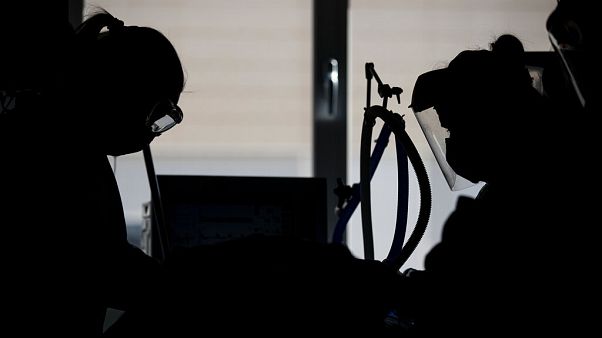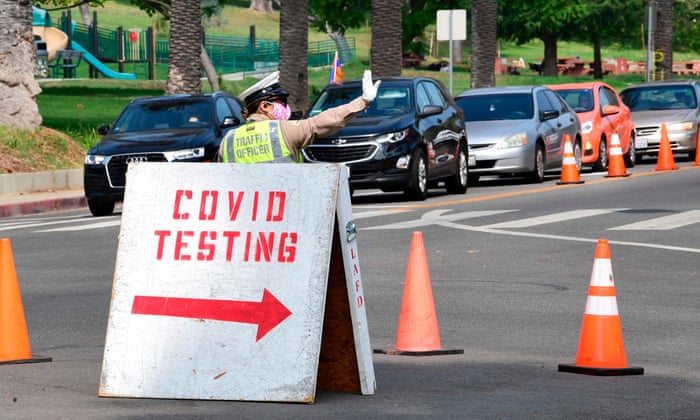As The World Turns Back Toward SARS-CoV-2
As The World Turns Back Toward SARS-CoV-2
"Countries that have avoided the first waves [in Europe] have no reason to be complacent.""It might be a cursed blessing [given the historical precedent of 1918 when some countries that managed to avoid the first wave of the flu pandemic were hit harder, later]."Yangzhong Huang, senior fellow for global health, Council on Foreign Relations"We are heading into a very substantial fall/winter surge [in the U.S.]""We expect the surge to ... continue to increase as we head towards high levels of daily deaths in late December and in January."Chris Murray, director, Institute for Health Metrics, University of Washington
 |
| Healthcare workers attend to a COVID-19 patient at one of the intensive care units (ICU) at the University Hospital of Torrejon in Torrejon de Ardoz, Spain - AP Photos |
Having
avoided the worst outcomes of the first wave of COVID-19, some of those
countries in Europe are now experiencing a case spike for the first
time while others which were hit hard by the initial invasion of the
highly infectious novel coronavirus are once again suffering the anguish
of having been ambushed by a virus that will not fade gracefully into
the past. This is a virus that is more complex, more unexpected and more
deadly than others that have visited an unwilling human world
population.
Parts
of Central and Eastern Europe where not so long ago countries received
high praise for low case numbers are now attempting to cope with some of
the steepest rates of infection in the world. In Latin America, South
Asia and the Middle East, very similar conditions have been anguishing
countries there. In Poland new cases reported daily saw a record 7,482
declared on Monday, the government announcing its plans to transform the
National Stadium in Warsaw to a field hospital, even while the nation's
president has become one of the COVID victims, and is now in isolation.
On
Sunday, 5,059 were recorded, its health minister resigned to be
replaced by an epidemiologist who has entreated Czech doctors working
abroad to return to their country at a time of national need. In the
coming weeks, warned Czech epidemiologist Roman Primula, there would be
seen a "significant increase in the number of hospitalizations, severe coronavirus cases, and deaths".
 |
| A couple walks through Prague, Czech Republic. Due to a rise in coronavirus infections, the interior minister recently warned that the country's medical system is 'in danger of collapsing.' (Gabriel Kuchta/Getty Images) |
Poland and the Czech Republic were viewed as success stories a mere few months earlier. The German newspaper Die Welt had reported in June that Poland had "stood firm while others have stumbled",
as the country of 38 million had a mere 23,000 cases confirmed. In
Prague, thousands had attended a party in early July to say 'farewell'
to the virus, despite warnings from the World Health Organization. This
was at a time that the country of ten million had seen 12,000
infections.
Now, over 183,000 confirmed cases blemish Poland's success story, and the Czech Republic can boast around 174,000 COVID infections,
492 new cases per 100000 in the past seven days, indicative of one of
the fastest escalating outbreaks in the world, while Poland had 140 new
cases per 100000, a figure steeper than other global hot spots such as
the United States and Spain. For the first time, over recent weeks some
countries in the Middle East have seen the virus widely spread, where
Jordan imposed weekend curfews and Lebanon shut its bars and nightclubs.
 |
| Cars line up at a drive-thru COVID-19 testing site in El Paso, Texas, on Friday. (Paul Ratje/AFP via Getty Images) |
Then
there is the United States where a study by the University of
Washington's Institute for Health Metrics and Evaluation estimated the
pandemic could claim over 500,000 American lives by February, over
double the death rate at the present time, which is rated amongst the
highest in the world. Colder weather, it is feared, will have the effect
of driving people indoors where it is more likely for the virus to
spread -- along with the concerns that people fail to wear masks.
Even
as cool weather is just beginning to settle over the country, cases,
hospitalizations and deaths are increasing to the point where
nationwide, 76,195 new cases were reported on Thursday, almost a
single-day record high of 77,299 seen on July 16. India is the only
country that saw a greater number of cases in a one-day period on
September 17, of 97,894. Should 95 percent of Americans begin to cover
their faces with masks out in public however, the IHME suggests that
possible death-number could drop by 130,000.
According
to U.S.Health Secretary Alex Azar, the increase is attributable to the
behaviour of individuals, where household gatherings have become a "major vector of disease spead".
Pennsylvania recently reported its largest single-day increase since
the beginning of the pandemic.The U.S. on Thursday reported 916
fatalities due to COVID, one day after over 1,200 new deaths was
reported for the first time since August. The average is 785 deaths
daily over the past seven days.
 |
| A traffic warden directs traffic as motorists arrive for Covid-19 tests at Dodger Stadium in Los Angeles, California on 8 October. Photograph: Frederic J Brown/AFP/Getty Images |
U.S.
hospitals have seen a surge of up to 34 percent new patients of
COVID-19, from October 1. The hardest-hit state based on new cases per
capita have been recognized as North Dakota, with 887 new cases at last
count. The most new cases in sheer numbers were reported by Texas, with
5,820 new infections, California following with 6,365. Iowa, Kentucky,
Oklahoma, South Dakota, Tennessee, Wisconsin and Wyoming all reported
record numbers of hospitalized COVID patients.
While
Colorado, Illinois, Indiana, Montana, North Dakota, Ohio, Oklahoma and
Utah reported their largest daily increase since the beginning of the
pandemic. An exception is the Northeast where there has been no
significant surge even as infections are trending higher. A single
bright light is Vermont with no hospitalized COVID patients and a mere
16 new cases posted Thursday.
Labels: Europe, Global Pandemic, Second Phase, United States

<< Home